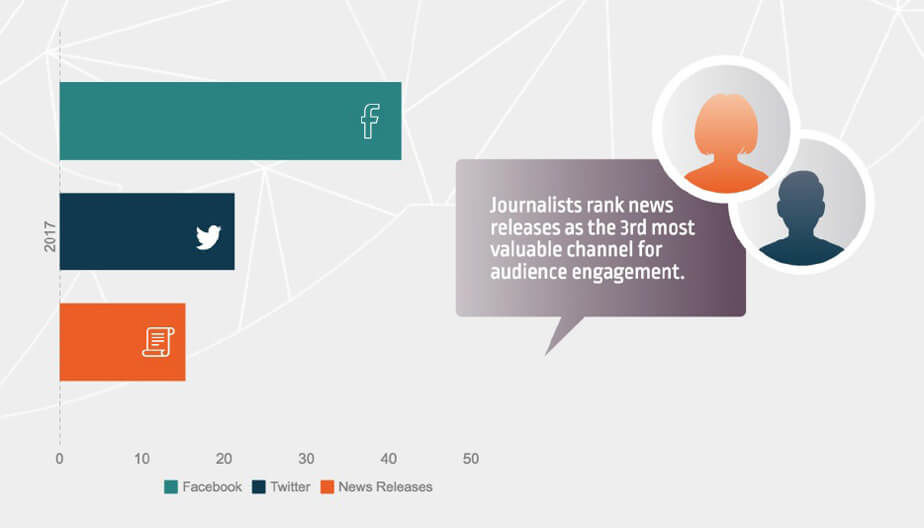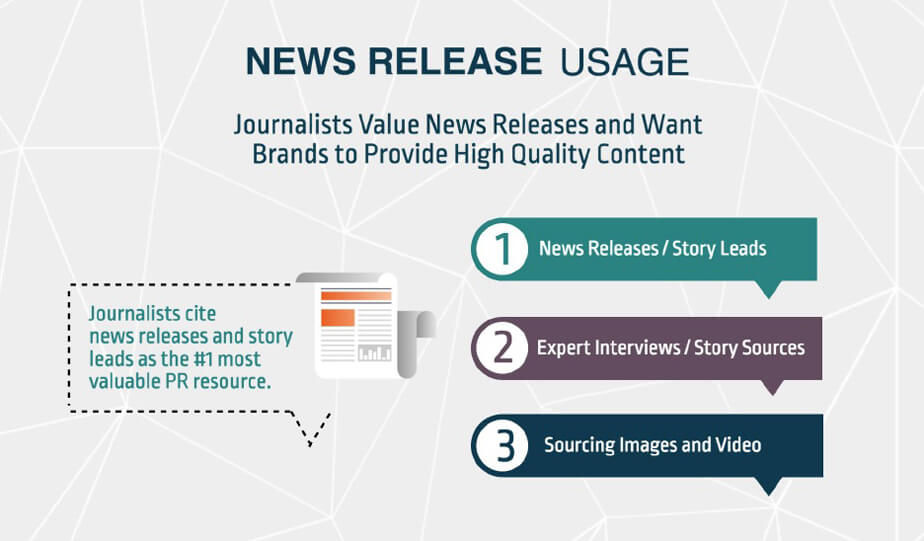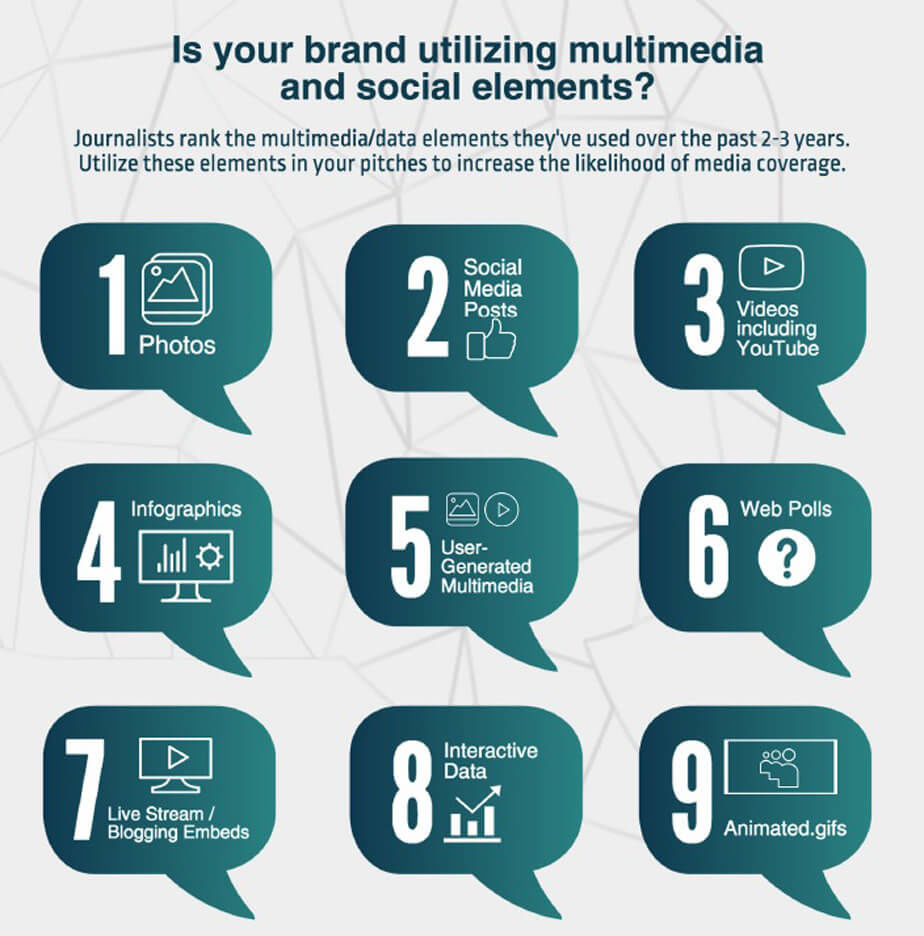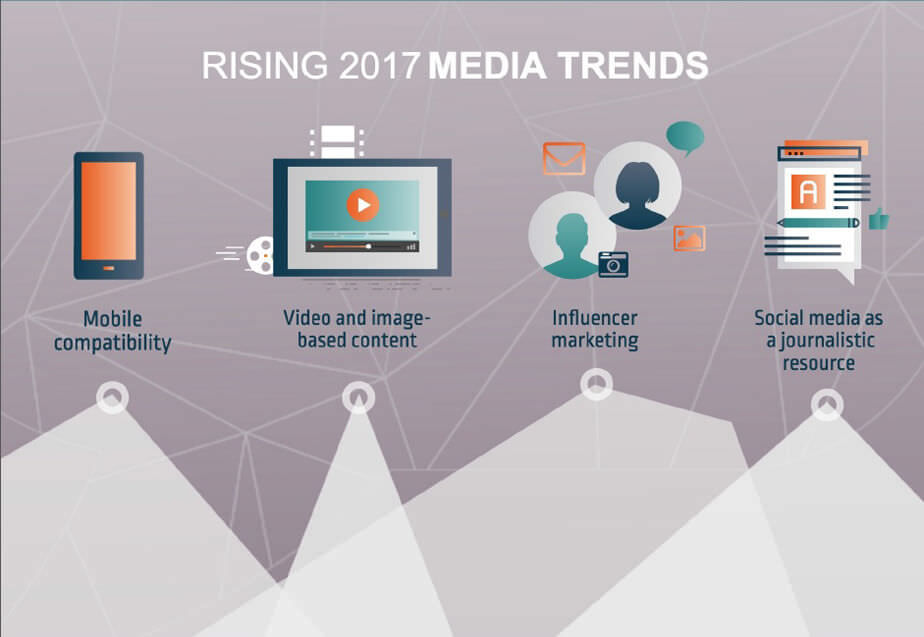
At present, more than 324 million people live in the US. But only a few media companies provide the third biggest nation worldwide with information and news. Ever since Donald Trump took office - and before that - the US media have had to face the challenge of being accused of manipulation and fake news. So how can US journalism manage the balancing act between profit orientation and raising awareness among the public? TREIBSTOFF talked to Chris Lynch. The Chief Marketing Officer at Cision and PR Newswire explains what PR Pros have to consider when they want to be successful in the US.
TREIBSTOFF: Could you give us a sense of the media landscape in the US?

LYNCH: According to our recent survey of 1,550 journalists and influencers, ninety-one percent of journalists believe that the media is somewhat or much less trusted than they were three years ago. This lack of trust aligns with the 2017 Edelman Trust Barometer, which this year saw the public’s trust in the media drop to a level matching distrust in government officials.
Ninety-two percent of our survey respondents said that being right is more important than being first, up four percent from 2016. This is significant because the 24/7 news cycle has been put into hyperdrive thanks to the proliferation of breaking news across social media. Because of social, news outlets are racing to report first - however, many have discovered that the sources provided on social media need to be triple vetted and continue to focus on providing quality news.
TREIBSTOFF: What are the challenges and opportunities?
LYNCH: When journalists were asked to explain what they see as the greatest challenges for the media this year, many respondents doubled down on the concept of regaining trust, the rise of misinformation and fake news. Some of the responses also lamented the fact that many media professionals fail to fact-check stories that they follow up on after another outlet was first to publish. Another issue is purely around setting the proper context high up in a story. For example, a podcaster from California said publications have a duty to inform readers in the headline when a public figure makes comments that are not verified.
As the traditional media pool shrinks or evolves, it’s more important than ever that communications professionals know which media professionals they are targeting and the topics that are most important to them.
“PR professionals should write angles that are less commercial and more usable for general audiences.”
“Agencies and brands should produce in-house B-Roll and sound clips relating to timely issues, especially visuals or videos of a work site or a specific product’s use.”
“If you are willing to write and distribute a press release you should be willing to reply to a few questions from journalists.”
“Write in AP Style.”
“Stop spamming journalists and stop calling to follow up after spamming them."
TREIBSTOFF: Which is the best way for PR Professionals to contact US American journalists?
LYNCH: Journalists continue to prefer email as the primary means of contact, with more than 90 percent of respondents indicating it as the best way to directly pitch a story idea. Calling journalists via phone or pitching through social media have ranked below three percent since we began asking this question. Journalists and influencers particularly dislike being contacted via telephone, with an eight percent uptick of respondents who said that telephone pitches are strictly off limits.

TREIBSTOFF: Let’s talk about social media: Which channels are primary used?
LYNCH: Facebook’s channel value continues to dominate, growing three percent over 2016. Forty-one and a half percent of survey respondents chose Facebook as the most valuable channel for audience engagement. Twitter saw a significant decline among respondents, dropping 19 percent from 2016. One caveat to Twitter’s drop is that this year we included press releases as a channel for the first time in the survey. Press releases ranked third after Facebook and Twitter with 15 percent of respondents choosing it as the most valuable audience engagement channel.
TREIBSTOFF: How do companies and PR Agencies use social media for their communications?
LYNCH: The integration of social media into PR communications strategies is becoming so mainstream today that it is often used for brand campaigns as part of a larger, cross-channel mix. Photos and social media posts rank first and second as the most popular forms of media used. This is why it is critical for brands to execute a data-driven, multichannel content strategy that includes social media. One of the first places journalists visit when a brand experiences a crisis is a company’s social media channels. If brands are unresponsive on social during a crisis, the media may publish damaging social media mentions.
TREIBSTOFF: Are the USA different from other countries in this regard?
LYNCH: American and Canadian consumers tend to be less privacy conscious than Europeans, which can directly impact the effectiveness and reach of a brand’s paid targeted social media marketing campaign. The social media networks and user preferences vary greatly across different countries. For example, vk.com (Russia), Twoo (Belgium) and Wechat (China) have prominence over Facebook and Twitter. Therefore, the platforms journalists and their audiences engage on and the types of information shared there can differ greatly.
TREIBSTOFF: What do you think, will the importance of Social Media in the US grow or will it stagnate?
LYNCH: The importance of social media in the U.S. will continue to grow, both in terms of how useful it is to journalists for news gathering and engaging with their audiences as well as for readers, as social is a primarily source of their news on a daily basis. The evolution of content consumption will also increase the growth of social media usage in the U.S.
TREIBSTOFF: Should PR-Pros implement Snapchat and Instagram into their PR campaign?
LYNCH: Before adding a social network to PR campaigns, communicators need to first determine if their audience is actually present and engaging on those networks. Then, they can craft a strategy for each of those networks that can engage those audiences and drive them to their desired actions. It’s important to consider that metrics and measurement associated with Instagram and Snapchat are currently limited and not as robust as the big three (Twitter, Facebook, LinkedIn) and it may be harder to prove the ROI.

TREIBSTOFF: How about mobile communication, is it still on the rise in the USA?
LYNCH: Journalists are more prepared today to engage in a digital-first environment and they see sponsored content and native advertising as less important than last year. When asked to explain their choices, the issues most often mentioned included the drive towards mobile readership and an increase in video requirements based on readers’ demands.
TREIBSTOFF: Could you describe the mobile communication development?
LYNCH: While television remains the primary source for news consumption among Americans, there has been a trend among those who prefer their method of news consumption through reading towards online mediums and away from print. Between 2013 and 2016, a Pew research poll found that the consumption of online news media through mobile devices increased from 54 percent to 72 percent, and consumption on desktops or laptops decreased from 82 percent to 79 percent.
TREIBSTOFF: What advice would you give companies planning to use multimedia content in the future?
LYNCH: This year’s research indicates that media professionals and journalists are trying to make their stories and content more interactive. When asked which multimedia or data elements they have included in articles over the past two to three years, results show journalists are now more likely to use images, videos, infographics and user generated multimedia than data assets.
To increase the relevance of the images provided to journalists, communicators should include photo credits and captions which clearly describe a photo’s content, as well as the dateline city and the source (who is responsible for the news and images). By including images in a release or a pitch, PR professionals can both increase its relevance and the likelihood that it will get picked up.

TREIBSTOFF: Could you provide some examples for successful PR campaigns, which have generated large coverage?
LYNCH: Some examples that come to mind of recent PR campaigns that have been highly successful include the Always #LikeAGirl campaign, the pharmacy chain CVS’ “CVS Quits” campaign which focused on removing tobacco products from its shelves as well as the introduction of a program to help individuals quit smoking, and the skincare brand Nivea’s “Sunslide” campaign aimed at increasing awareness of skin cancer in relation to sun exposure. Lockheed Martin’s Generation Beyond campaign has also made strides in the latest trend, Virtual Reality (VR) with ‘The Mars Bus,' which provided kids with an interactive simulated drive along the planet’s surface.
TREIBSTOFF: Let's talk about the current situation in the US: Since Donald Trump’s inauguration US media companies are emergently under pressure, e.g. for accusations of producing “fake news”. How does the US media deal with these kind of accusations? Also, what measures are taken to avoid distribution of false or misleading information?
LYNCH: Dating back to what is likely the dawn of our nation, the reality of “fake news” has existed within our press and is something the public has had to deal with. Take for example Thomas Jefferson’s thoughts on the media in a letter from 1807: “Nothing can now be believed which is seen in a newspaper. Truth itself becomes suspicious by being put into that polluted vehicle… I will add, that the man who never looks into a newspaper is better informed than he who reads them; inasmuch as he who knows nothing is nearer to truth than he whose mind is filled with falsehoods & errors.” Given that “fake news” has been around for centuries, and shows no signs of disappearing, the media has to focus on distinguishing itself from the label of “fake news” by delivering better quality content. The Columbia Journalism Review’s David Uberti hits this idea right on the head: “The unfair reality is that the press needs to do better. A more affirmative case to trust us, not them—through sharp reporting that recognizes its own faults—is in order. While fake news and bad reporting both threaten the accuracy of information that reaches the public, journalists have real power to affect just one of the two.”
That said, sometimes the media being criticized can historically create a boon and desire by consumers for better news due to how they're treated by politicians. For example, in his re-election for president in 1972, Richard Nixon was sharply critical of the media and their coverage of his presidency. A year or so later, we had Watergate because it turned out some of the questions the Washington Post were asking were valid. So for the media outlets that are adhering to facts and truth, they do have a great future here.
TREIBSTOFF: Under the given circumstances what will be the role of the media in the 21st century?
LYNCH: I believe the role of the media will be to continue to serve as a source of truth and factual information for the public - but of a higher caliber - if it is to remain a source of trust and influence. Respondents in our report believe that there are three primary points news outlets can focus on to help regain the public’s trust: focusing on more “fact-based” reporting than “opinion-based” coverage, as well as ensuring higher quality standards when it comes to “accuracy” and “sources.”
